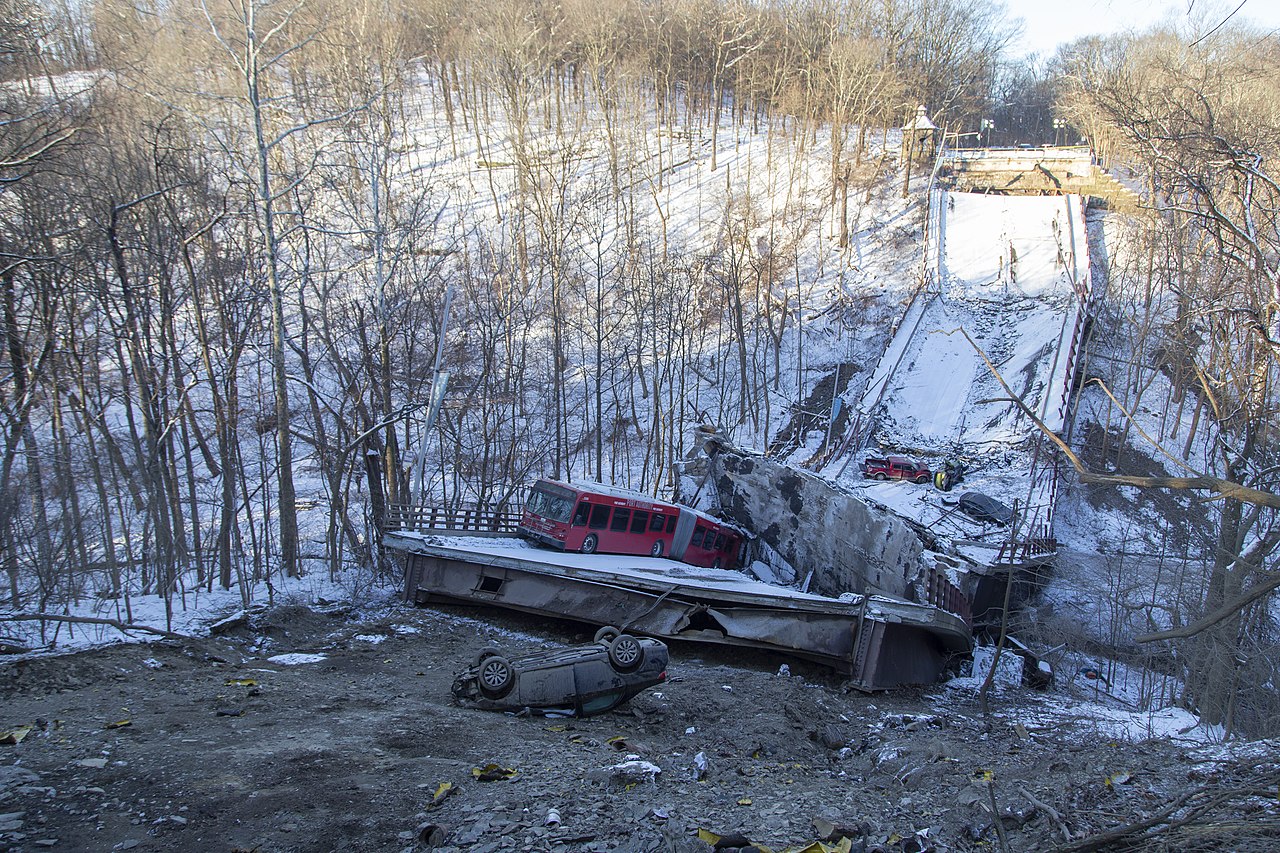
The University of Kansas School of Engineering has received a share of more than $500,000 in three grants from the US Federal Highway Administration (FHWA) for new research on improving and lengthening the service life of bridges.
Researchers will develop improved detailing in steel bridges to prevent constraint-induced fractures, investigate how to improve curricula for graduate students studying bridge design, and assess the effectiveness of ultra-high toughness (UHT) steel in bridge members to improve structural reliability.
The awards follow the collapse on 28 January this year of the 50-year-old Fern Hollow Bridge in Pittsburgh, Pennsylvania, which injured 10 people in vehicles that were on the bridge at the time.
“These sorts of things are happening with increasing frequency, and when they happen not only does it stop transfer of people and goods but it also really decays people’s faith in our societal functioning and their faith in how our infrastructure works — it decays the faith in this nation,” said Caroline Bennett, professor of civil, environmental and architectural engineering at the university, who is principal investigator on two of the new grants.
She will be the primary investigator on the $258,165 study, set to last 34 months, to develop improved detailing in steel bridges to prevent constraint-induced fractures.
“This is a specific type of fracture that can happen in fabricated steel components when you have detailing that produces something we call ‘constraint’ — when the structure can’t deform freely, localized stresses can build up such that the structure is not able to deform in the way that we expect as engineers,” Bennett said.
“This can cause a brittle fracture, and that can bring a structure down,” she said. “The type of detailing practices that might lead to this really aren’t well understood, and we’ve had a couple of bridge failures over the last few decades that have been attributed to constraint-induced fracture.”
She will also lead a $112,413 study lasting 22 months on how to improve curricula for graduate students studying design of bridges across the US.
She said “universities have reduced credit hours needed for a degree in structural engineering to focus on ‘the basics’ of a graduate education, often excluding bridge engineering”. At the same time, she said, codes and specifications governing bridge engineering practice have become increasingly complex.
“A lot of people who become competent bridge engineers require significant on-the-job training because they have not had a lot of formal education directly mapping to bridges,” Bennett said. “So, how can we better prepare and support people who are going to be working as bridge engineers?”
William Collins, associate professor of civil, environmental and architectural engineering at the university, will lead its portion of a $130,000, 22-month study headed by Modjeski and Masters, one of the world’s leading bridge engineering firms. The investigation will assess the effectiveness of ultra-high toughness (UHT) bridge steel within steel bridge members to improve structural reliability for the fracture limit-state, potentially deeming a fracture-critical designation unnecessary.
“The idea of preventing fracture is a big deal in civil infrastructure, especially for bridges,” Collins said. “When exposed to colder temperatures, steel structures are more susceptible to fracture-related failures. This is not typically a concern in buildings because buildings aren’t exposed to the elements like bridges are. In addition to these projects, Caroline and I do a lot of work examining different ways to monitor and inspect for fatigue and cracks. Rather than the design or inspection aspects of controlling fracture, this third project is focused on the material side of things.”
He said steel-making capabilities have improved in recent decades but steel-bridge designs don’t make the best use of steel’s enhanced performance.
“If we can take advantage of some of that increased fracture toughness we have right now in our steels, we can potentially save money on the inspection and maintenance side of things,” Collins said.






